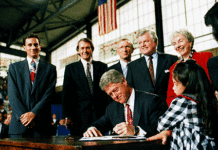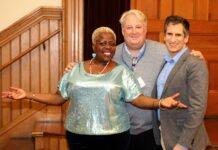Findings reported recently from a new international study of healing prayer suggest that prayer for another person’s healing just might help — especially if the one praying is physically near the person being prayed for.
Candy Gunther Brown, an associate professor in the Department of Religious Studies at Indiana University Bloomington, led the study of “proximal intercessory prayer” for healing. The study measured surprising improvements in vision and hearing in economically disadvantaged areas where eyeglasses and hearing aids are not readily available.
“We chose to investigate ‘proximal’ prayer because that is how a lot of prayer for healing is actually practiced by Pentecostal and Charismatic Christians around the world,” Brown said. “These constitute the fastest-growing Christian subgroups globally, with some 500 million adherents, and they are among those most likely to pray expectantly for healing.”
Brown and her colleagues carried out the study as part of a larger research program, funded by the John Templeton Foundation Flame of Love Project, on the cultural significance and experience of spiritual healing practices. As editor of a forthcoming book, Global Pentecostal and Charismatic Healing (Oxford University Press, scheduled for release January 2011), Brown has made an in-depth, seven-year study of how Pentecostals worldwide pray for healing.
Although Pentecostals often pray for their own healing and request distant intercessory prayer, they consider proximal prayer to be particularly effective and emphasize the importance of physical proximity and human touch for healing.
“When people feel that they have a serious need for healing, they are willing to try almost anything,” Brown said. “If they feel that a particular religious or spiritual practice healed them, they are much more likely to become an adherent. This phenomenon, more than any other, accounts for the growth of these Christian subgroups globally.”
Brown and her colleagues studied the activities of the healing groups Iris Ministries and Global Awakening in Mozambique and Brazil because of their reputation as hotspots of specialized prayer for those with hearing and vision impairments.
The researchers used an audiometer and vision charts to evaluate 14 rural Mozambican subjects who reported impaired hearing and 11 who reported impaired vision before and after the subjects received proximal prayer. The study focused on hearing and vision because it is possible to measure them with hearing machines and vision charts, allowing a more direct measure of improvement than simply asking people whether they feel better.
Subjects exhibited improved hearing and vision that was statistically significant after the prayer was administered. Two subjects with impaired hearing reduced the threshold at which they could detect sound by 50 decibels. Three subjects had their tested vision improve from 20/400 or worse to 20/80 or better. These improvements are much larger than those typically found in suggestion and hypnosis studies.
Brown recounted that one subject, an elderly Mozambican woman named Maryam, initially reported that she could not see a person’s hand, with two upraised fingers from a distance of one foot. A healing practitioner put her hand on Maryam’s eyes, hugged her and prayed for less than a minute; then the person held five fingers in front of Maryam, who was able to count them and even read the 20/125 line on a vision chart.
Supplemental digital content for the published study reports on a follow-up study with similar findings conducted by the same researchers in urban Brazil.
Scientific research on intercessory prayer has in recent decades generated a firestorm of controversy, with critics charging that attempts to study the efficacy of prayer are inherently unscientific and should be abandoned because the mechanisms are poorly understood. Several studies have produced contradictory findings. — Newswise












